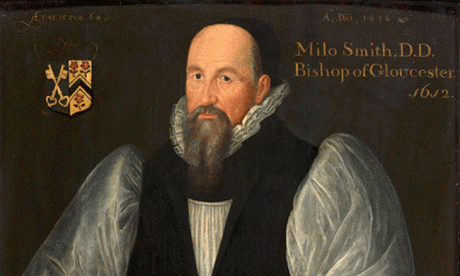
Miles Smith, one of approximately 50 translators to work on the King James Bible, had mastered the languages of Syriac, Aramaic, Arabic, Hebrew, Greek and Latin.
Credit: The Master and Fellows of University College, Oxford

Miles Smith, one of approximately 50 translators to work on the King James Bible, had mastered the languages of Syriac, Aramaic, Arabic, Hebrew, Greek and Latin.
Credit: The Master and Fellows of University College, Oxford
England's Lord Macaulay perhaps said it best: The King James Bible is "a book which, if everything else in our language should perish, would alone suffice to show the whole extent of its beauty and power."
The surprising story of the Bible's origin and history is told in a new website funded in part by the NEH and produced by the Folger Shakespeare Library in Washington, DC and the Bodleian Library, University of Oxford, with assistance from the Harry Ransom Center at the University of Texas at Austin. “Manifold Greatness: The Creation and Afterlife of the King James Bible” is a richly illustrated website teeming with information about the English translation of the Christian Bible completed in 1611 at the order of King James I.
This King James Bible was not the first Bible translated into English. Versions of an English Bible had circulated throughout England, even though possessing such a book was regarded as heresy at various times, punishable by death.
The translators operated on the principle, according to Hannibal Hamlin, the co-creator of the exhibition and associate professor at Ohio State University, that “if it wasn’t broke, they didn’t fix it.”
They worked in committees. They laid down 15 rules. They toiled line by line and word by word for eight years. King James never lifted a quill toward the effort. William Shakespeare, then at the height of his career, didn’t have a hand in it either. The translators were interested only in producing the most perfect rendition of the word of God.
How do we know? It’s on the website, along with frequently asked questions, a kids' section with a scavenger hunt, and videos, interviews and photographs galore. The answer to the question about Shakespeare’s (lack of) involvement in the Bible and other reader queries is contained in another website feature — a regularly updated blog.